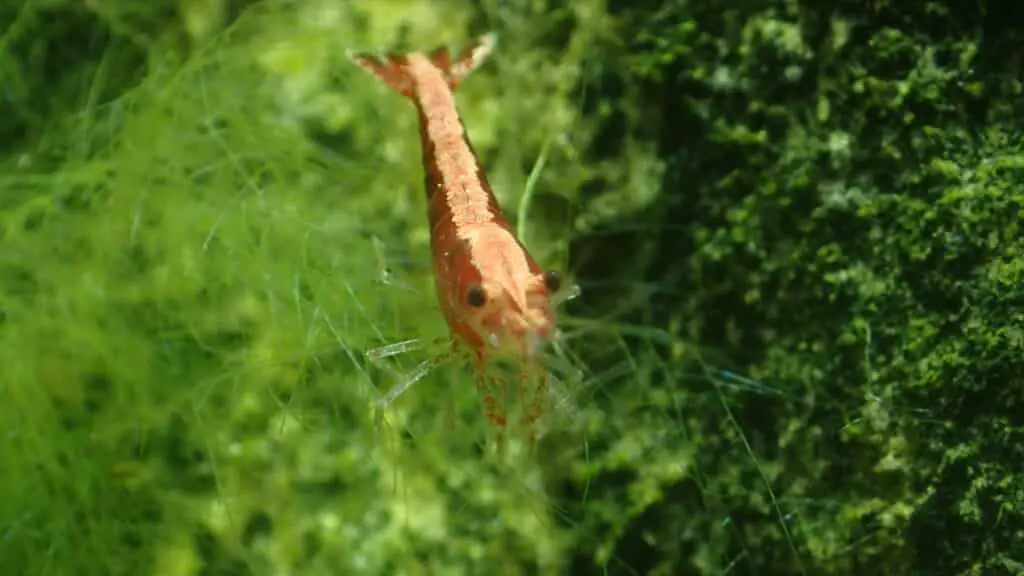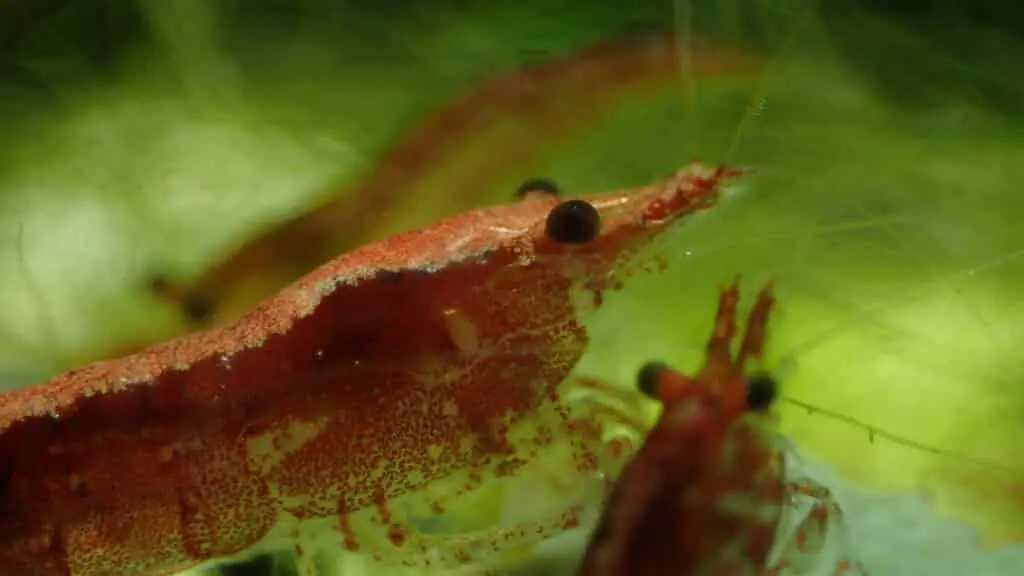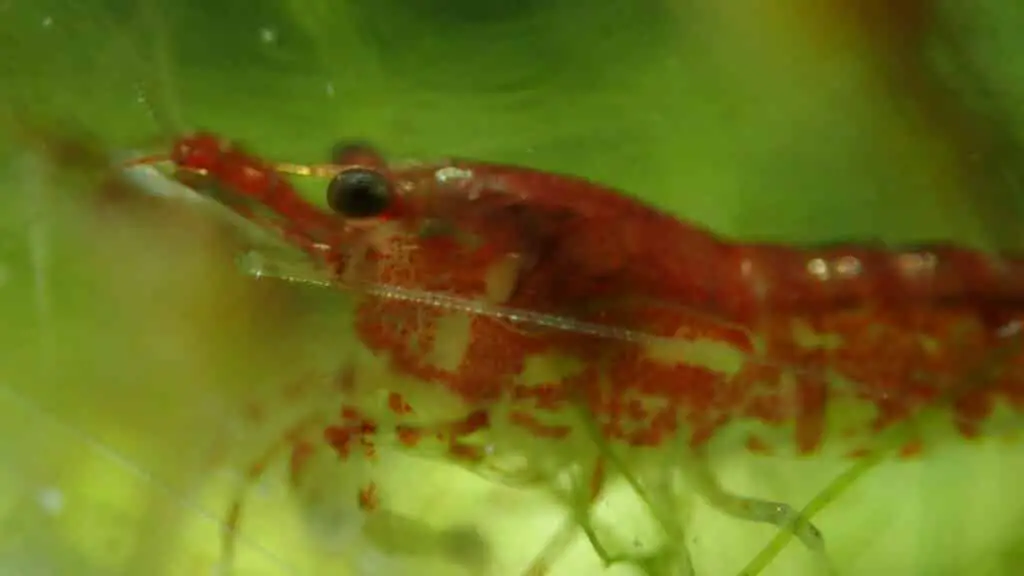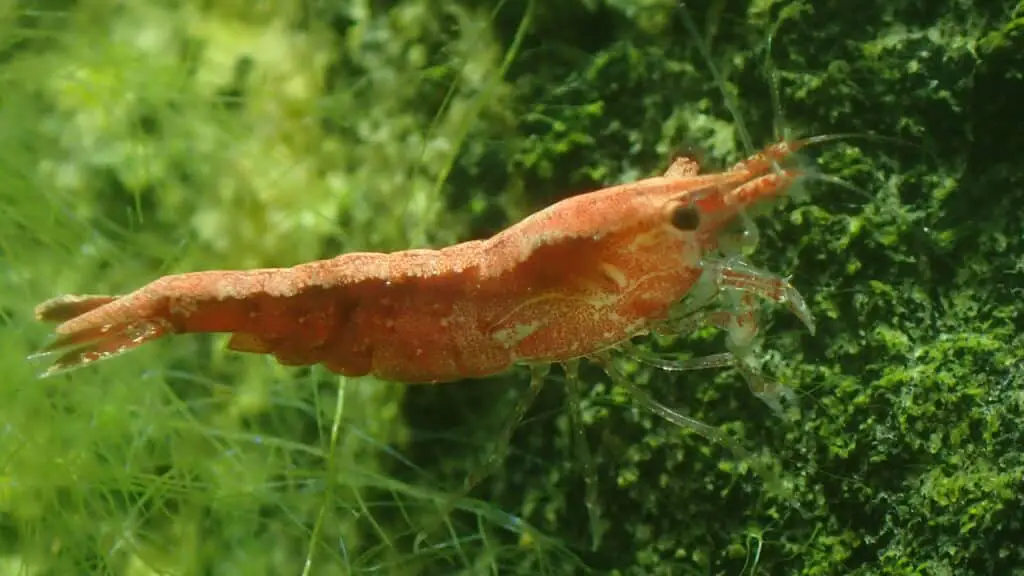Are Cherry Shrimp Freshwater or saltwater?
I. Introduction
A. Explanation of cherry shrimp and their popularity in the aquarium hobby
Cherry shrimp (Neocaridina davidi) are a species of freshwater shrimp that are native to Taiwan. They are popular in the aquarium hobby because of their bright red coloration, ease of care, and ability to reproduce in a home aquarium. Cherry shrimp are small in size, growing up to 1-1.5 inches (2.5-3.8 cm) in length, and are relatively easy to keep in a home aquarium.
Cherry shrimp are omnivores, and their diet consists of algae, plant matter, and small organisms such as insects and other invertebrates. They are also known for their ability to clean up leftover food and other organic matter in the aquarium, making them beneficial for maintaining a healthy aquarium ecosystem.
In recent years, cherry shrimp have become increasingly popular in the aquarium hobby due to their bright and vibrant colors. They are often used to add color and life to aquascapes and planted aquariums, and their active and playful behavior can also be entertaining to watch.
B. Brief overview of the topic and what the article will cover
In this article, we will explore the question of whether cherry shrimp are freshwater or saltwater shrimp. We will provide a detailed explanation of what cherry shrimp are and why they are so popular in the aquarium hobby. We will also cover the differences between freshwater and saltwater shrimp and why cherry shrimp are considered to be freshwater shrimp.
We will provide an overview of the natural habitat and range of cherry shrimp, their preferred water parameters, and the physiological adaptations that allow them to live in freshwater. We will also discuss whether cherry shrimp can live in saltwater and the challenges of keeping them in a saltwater environment.
By the end of this article, you will have a clear understanding of whether cherry shrimp are freshwater or saltwater shrimp and why they are such a popular species in the aquarium hobby. Whether you are a seasoned aquarist or just starting out, this article will provide valuable insights into the care and maintenance of cherry shrimp in a home aquarium.

II. What are cherry shrimp?
A. Description of cherry shrimp, their appearance, and behavior
Cherry shrimp are small freshwater shrimp that are native to Taiwan. They are a species of Neocaridina, a genus of shrimp that includes several different color variations such as red, blue, yellow, and green.
The most commonly kept variation is the cherry shrimp, which is known for its bright red coloration. Cherry shrimp have a translucent body with a bright red coloration that is most pronounced on their tail, legs, and antennae. Their color can vary in intensity depending on the water parameters, diet, and genetics.
Cherry shrimp have a unique behavior that makes them a fascinating addition to any aquarium. They are social creatures and prefer to live in groups of at least 10 individuals. They spend most of their time scavenging for food and algae, which makes them beneficial for maintaining a healthy aquarium ecosystem. They are also known for their ability to clean up leftover food and other organic matter in the aquarium.
Cherry shrimp are relatively easy to care for and are suitable for beginners in the aquarium hobby. They prefer a well-planted aquarium with plenty of hiding places and a gentle water flow. They are sensitive to high levels of ammonia, nitrite, and nitrate, so it’s important to maintain good water quality by performing regular water changes and testing the water parameters.

B. Habitat and natural range of cherry shrimp
Cherry shrimp prefer to live in shallow, slow-moving water with plenty of aquatic vegetation and hiding places.
In their natural range, cherry shrimp can be found in a variety of different water conditions, from slightly acidic to slightly alkaline.
The water in their natural habitat is typically clean, well-aerated, and well-circulated. They are sensitive to high levels of ammonia, nitrite, and nitrate, so it’s important to maintain good water quality in the aquarium to ensure their health and well-being.
Cherry shrimp are known for their ability to adapt to different environments and can be found in a variety of different habitats in their natural range. They are also capable of thriving in home aquariums as long as their basic needs are met, such as appropriate water parameters and a suitable environment with plenty of hiding places and vegetation.

III. Freshwater vs. Saltwater Shrimp
A. Explanation of the differences between freshwater and saltwater shrimp
Freshwater shrimp and saltwater shrimp are two distinct groups of crustaceans that have evolved to live in very different environments. While both types of shrimp share some similarities in terms of anatomy and behavior, there are several key differences that distinguish them from one another.
One of the most obvious differences between freshwater and saltwater shrimp is the salinity of the water in which they live. Freshwater shrimp live in water that has a salt concentration of less than 0.5 parts per thousand (ppt), while saltwater shrimp live in water that has a salt concentration of at least 30 ppt.
The differences in water salinity between freshwater and saltwater shrimp have led to significant differences in their physiology and behavior. For example, freshwater shrimp have adapted to living in a hypotonic environment, where water flows into their bodies and they need to excrete excess water to maintain osmotic balance. Saltwater shrimp, on the other hand, have adapted to living in a hypertonic environment, where water flows out of their bodies and they need to actively absorb water to maintain osmotic balance.
Another key difference between freshwater and saltwater shrimp is the type of food they eat. Freshwater shrimp are typically omnivorous and feed on algae, plant matter, and small organisms such as insects and other invertebrates. Saltwater shrimp, on the other hand, are usually carnivorous and feed on small fish, plankton, and other marine invertebrates.
In terms of anatomy, freshwater shrimp tend to be smaller in size than saltwater shrimp, with a more streamlined and elongated body shape. Saltwater shrimp are generally larger and have a more robust body shape with larger claws and appendages for catching and manipulating their prey.

B. Overview of the types of shrimp and their preferred habitat
There are many different types of shrimp that can be found in both freshwater and saltwater environments. In terms of freshwater shrimp, some of the most commonly kept species in the aquarium hobby include cherry shrimp, Amano shrimp, and ghost shrimp. In terms of saltwater shrimp, popular species include peppermint shrimp, cleaner shrimp, and pistol shrimp.
Freshwater shrimp, as their name suggests, are adapted to living in freshwater environments. They can be found in a variety of habitats, including streams, rivers, ponds, and wetlands. Freshwater shrimp prefer water that is clean, well-circulated, and well-aerated, with a pH range of 6.5-8.0 and a temperature range of 68-82°F (20-28°C). They also prefer an environment with plenty of vegetation and hiding places.
Saltwater shrimp, on the other hand, are adapted to living in marine environments. They can be found in a variety of habitats, including coral reefs, estuaries, and rocky shores. Saltwater shrimp prefer water that is clean and well-circulated, with a salinity range of 30-35 ppt and a temperature range 3-30°C. They also prefer an environment with plenty of hiding places and coral structures to explore.
Both freshwater and saltwater shrimp can be a beautiful and fascinating addition to an aquarium. They are known for their unique behaviors, attractive appearance, and beneficial role in maintaining a healthy aquarium ecosystem. By understanding the different types of shrimp and their preferred habitats, aquarists can create an environment that is ideal for their specific needs and ensure that they thrive in their new home.

IV. Cherry Shrimp as Freshwater Shrimp
A. Discussion of why cherry shrimp are considered freshwater shrimp
Cherry shrimp are considered freshwater shrimp because they are adapted to living in freshwater environments.
Freshwater shrimp like cherry shrimp have physiological adaptations that allow them to live in freshwater environments. For example, they have a specialized organ that helps them excrete excess water and maintain osmotic balance in their bodies. They are also able to absorb essential nutrients and minerals from their surroundings, such as calcium, which is important for the development of their exoskeleton.
B. Explanation of their physiological adaptations that allow them to live in freshwater
Cherry shrimp are a species of freshwater shrimp that have adapted to living in freshwater environments. They have several physiological adaptations that allow them to live in these conditions and thrive in their natural habitat.
One of the key adaptations of cherry shrimp is their ability to regulate osmotic balance in their bodies. Freshwater is a hypotonic environment, meaning that there is a higher concentration of water outside the shrimp’s body than inside. As a result, water tends to flow into their bodies, which can cause them to swell and even burst. To prevent this from happening, cherry shrimp have a specialized organ called a “green gland” that helps them excrete excess water and maintain osmotic balance. This allows them to maintain a healthy fluid balance and prevent damage to their cells and tissues.
Another adaptation of cherry shrimp is their ability to absorb essential nutrients and minerals from their surroundings. Freshwater typically has a low concentration of essential minerals such as calcium, which is important for the development of their exoskeleton. To compensate for this, cherry shrimp are able to absorb these essential nutrients from their surroundings and incorporate them into their exoskeleton, allowing them to maintain a healthy and strong body structure.
C. Overview of their preferred water parameters
Cherry shrimp have specific water parameter requirements that must be met in order for them to thrive in a home aquarium. In general, cherry shrimp prefer water that is clean, well-circulated, and well-aerated, with a pH range of 6.5-8.0.
Cherry shrimp are sensitive to high levels of ammonia, nitrite, and nitrate, which can be toxic to them if left unchecked. It’s important to perform regular water changes and test the water parameters to ensure that they remain within acceptable levels. In addition, cherry shrimp require a low concentration of dissolved salts and minerals in the water.
The ideal water quality parameters for cherry shrimp include:
- pH: 6.5-8.0
- Temperature: 72-78°F (22-26°C)
- Ammonia: 0 ppm
- Nitrite: 0 ppm
- Nitrate: <20 ppm
- GH (general hardness): 6-8 dGH
- KH (carbonate hardness): 2-6 dKH
Overall, understanding cherry shrimp’s preferred water parameters is essential for ensuring that they are healthy and happy in a home aquarium. By providing an appropriate environment and meeting their basic needs, cherry shrimp can thrive and provide a beautiful and unique addition to any aquarium.

V. Can Cherry Shrimp Live in Saltwater?
Cherry shrimp are freshwater shrimp and are not adapted to living in saltwater environments. While they are able to tolerate a certain level of salinity in their water, they are not capable of surviving in a fully marine environment.
If cherry shrimp are exposed to high levels of salt, it can be toxic to them and can cause serious harm or death. As a result, it is not recommended to keep cherry shrimp in a saltwater aquarium.
However, there are many other types of shrimp that are adapted to living in saltwater environments, such as cleaner shrimp, peppermint shrimp, and pistol shrimp. These species have different physiological adaptations that allow them to survive and thrive in a marine environment, including a tolerance for higher levels of salt and the ability to actively absorb water to maintain osmotic balance.
Overall, while cherry shrimp are not able to live in saltwater, there are many other species of saltwater shrimp that can be kept in a marine aquarium. It’s important to research the specific needs and requirements of any shrimp species before adding them to a home aquarium, and to ensure that the water parameters and other environmental conditions are appropriate for their specific needs.
VI. Conclusion
A. Recap of the main points of the article
The article explored the topic of whether cherry shrimp are freshwater shrimp. The main points covered in the article include:
- Cherry shrimp are a species of freshwater shrimp that are adapted to living in freshwater environments.
- They are native to Taiwan and are typically found in streams, rivers, and ponds with clean, well-aerated water and plenty of aquatic vegetation and hiding places.
- Cherry shrimp have several physiological adaptations that allow them to thrive in freshwater environments, including their ability to regulate osmotic balance and absorb essential nutrients from their surroundings.
- Cherry shrimp have specific water parameter requirements that must be met in order for them to thrive in a home aquarium, including a pH range of 6.5-8.0 and a temperature range of 68-82°F (20-28°C).
- Cherry shrimp are not able to survive in saltwater environments and should not be kept in a marine aquarium.
- Understanding the natural habitat and requirements of cherry shrimp is essential for creating an environment that mimics their natural conditions in a home aquarium.
B. Final thoughts on the topic
While cherry shrimp are relatively easy to care for, it’s important to understand their basic needs and requirements in order to create an environment that mimics their natural habitat. This includes providing clean, well-circulated water with appropriate water parameters, plenty of aquatic vegetation and hiding places, and a suitable social environment with other cherry shrimp.
It’s also important to note that cherry shrimp are not able to survive in saltwater environments and should not be kept in a marine aquarium. Understanding the natural habitat and requirements of cherry shrimp is essential for ensuring that they are healthy and happy in a home aquarium.

FAQ
Can cherry shrimp live in freshwater?
Do cherry shrimp need saltwater?
What kind of water do cherry shrimp need?
Can cherry shrimp live in tap water?
 to neutralize these chemicals before adding tap water to the aquarium. Some tap water may also have a pH or hardness level that is not suitable for cherry shrimp, so it’s important to test the water and adjust it if necessary.
to neutralize these chemicals before adding tap water to the aquarium. Some tap water may also have a pH or hardness level that is not suitable for cherry shrimp, so it’s important to test the water and adjust it if necessary.